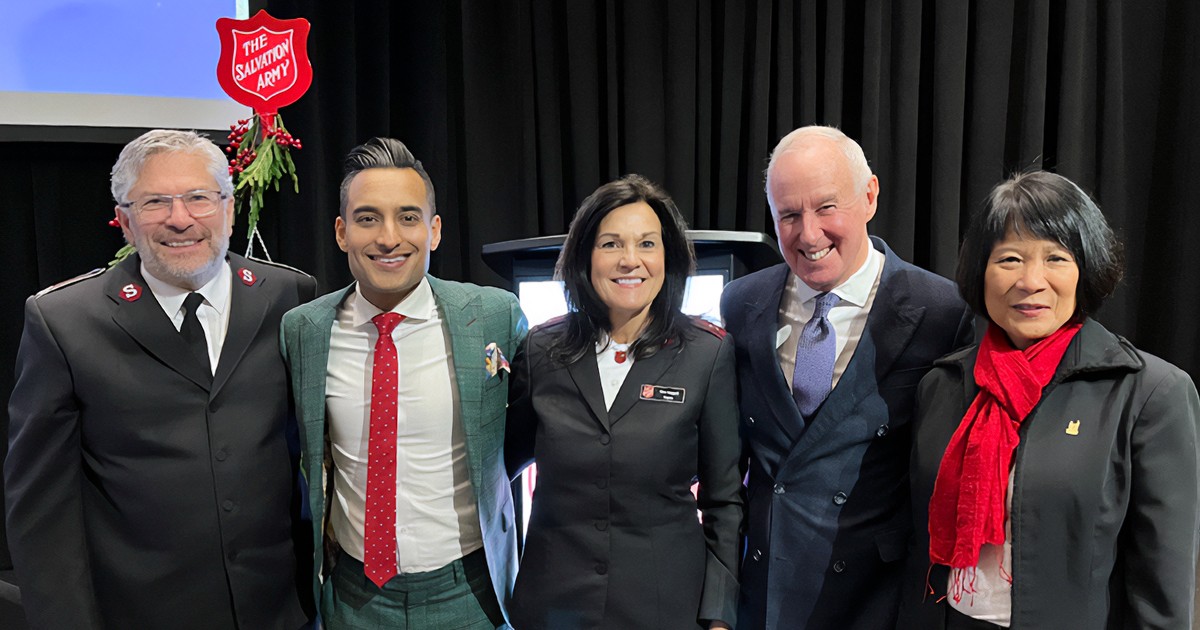 Pity poor Scrooge. He saw Christmas as an interference, a day when he paid Bob Cratchit to stay home and enjoy himself with his family. To Scrooge this was like having his pocket picked on an annual basis. Bah! Humbug!
Pity poor Scrooge. He saw Christmas as an interference, a day when he paid Bob Cratchit to stay home and enjoy himself with his family. To Scrooge this was like having his pocket picked on an annual basis. Bah! Humbug!
If only he'd known the art of commercializing Christmas, Scrooge could have made himself a lot more money, and Christmas would have been something for him to anticipate all year. Today's business owners are a lot Scroogier. Rather than despising Christmas they have learned to make it the most profitable time of the year. If Scrooge is synonymous with greed, avarice and taking advantage of others, then today's multinational corporations with their slick advertising, sweat-shop manufacturing and international distribution network have commercialized Christmas to a degree unimaginable even to Scrooge in his original reprobate state.
Ironically, Charles Dickens, the creator of Scrooge, whom he described as “a squeezing, wrenching, grasping, scraping, clutching, covetous old sinner,” unwittingly contributed to the creation of more such people. Nothing stirs the average Christmas shopper more than the ideas that have come to us from the Dickensian Christmas and the Victorian era. Queen Victoria and her husband, Prince Albert, the popular royals of their day, were pictured in the Illustrated London News standing with their children beside a Christmas tree. Immediately Christmas trees became fashionable among the British population. About this same time there was a revival of Christmas carol singing in churches and orchestral halls. (For almost two hundred years public carol singing was prohibited in England and the practice went on only in private homes.) In 1843, the same year that Dickens published A Christmas Carol, the first Christmas card was designed and printed. This card was a triptych consisting of three panels. The centre panel pictured a happy family enjoying a Christmas dinner complete with wine, even for the children. The panels on the left and right showed Christmas acts of charity—feeding the hungry and clothing the naked. Written in bold, red letters were the words, “A Merry Christmas and a Happy New Year to You.”
Then we have Dickens' Christmas stories, the greatest of which is A Christmas Carol. One contemporary sociologist writes: “Charles Dickens has probably had more influence on the way that we celebrate Christmas today than any single individual in human history except one.” According to historian Ronald Hutton, “the current state of observance of Christmas is largely the result of a mid-Victorian revival of the holiday spearheaded by A Christmas Carol.”
Family Focus
And what does that Christmas look like? Ideally it is a family-centred event with gatherings around a Christmas tree, a feast with relatives coming from far and near to enjoy one another's company, a turkey the size of Tiny Tim, lots of good cheer and best wishes that God will bless us every one. It is this Dickensian ideal that modern-day Scrooges unabashedly commercialize at Christmas.
Advertisers inevitably show happy family gatherings as they promote products that will make those family times even happier. This includes everything from big-screen TVs that families can gather around to watch Christmas specials, to new seven-passenger vehicles that can accommodate the whole family as they go out looking for the perfect Christmas tree. Perhaps the most profitable entrepreneurs to capitalize on the family aspects of Christmas are the moviemakers. Untold millions have been made by the producers of Christmas family movies, which include such popular titles as It's a Wonderful Life (1946), A Christmas Story (1983) and Home Alone (1990). And there have been more than a dozen movie versions of the Dickens' classic, including the 2009 Disney 3-D animated version that featured the voice of Jim Carrey. That film alone grossed more than $325 million.
Party Christmas
The next big idea associated with Christmas that came to us from the 19th century was that Christmas is a fun time. The most popular song sung during Christmas is arguably Jingle Bells. The song was written in 1850 by American songwriter James Lord Pierpont just seven years after Dickens published A Christmas Carol. Although the song says nothing at all about the Nativity, we can hardly imagine a Christmas without singing Jingle Bells. The song is sung all over the English-speaking world. Even in Australia where Christmas comes in midsummer and they celebrate on the sandy beaches, people sing, “Dashing through the snow.” Even The Salvation Army has the music for the song in its repertoire, and whenever a band strikes up the melody any children present immediately begin clapping, singing and dancing. The song has made millions for crooners all over the world, including such notables as Bing Crosby, Elvis Presley, The Beatles and Luciano Pavarotti. Even the Sex Pistols made money on this song.
Promoting Christmas as a fun time is not a hard sell. Those who chose to promote this aspect of Christmas have made fortunes. The greeting “Merry Christmas” implies fun and enjoyment. One way to do this is through an innocent activity like a sleigh ride. But sleigh rides don't generate a lot of income, so why not take a cruise to the Caribbean instead? Or how about a week in Florida or Christmas in Disneyland? For those who want to stay closer to home there are the ski vacations and snowboarding. Fancy brochures picture young men and women in colourful outdoor fun-ware enjoying the Christmas holidays in a mountain resort.
Closely associated with many of these fun activities is the consumption of alcohol. Whether on a cruise where people wine and dine, on the slopes where people open a cold one or at the office where there is an open bar, alcohol is a must-have ingredient for many when celebrating Christmas. And advertisers are quick to promote their products. Always the products are linked to good times as videos show young men and women either partying or enjoying some sporting activity. The result in Canada is a 36 percent increase in alcohol consumption during the holiday season and a lot of money in the pockets of the brewers and sellers. It pays to advertise!
Here Comes Santa Claus
Then there is Santa Claus. The popular picture of Santa is that of a magical figure who dashes around the world on a sled pulled by flying reindeer on Christmas Eve distributing gifts to children. This picture has come to us from the pen of Clement Clarke Moore in his poem A Visit from St. Nicholas (also known as The Night Before Christmas), which first appeared on December 23, 1823, in the Sentinel, a newspaper published in Troy, New York. Saint Nicholas (Dutch: Sinterklaas) in the Dutch tradition is the patron saint of children. In the old customs of the Netherlands, children put their shoes in front of the fireplace before they went to bed on Saint Nicholas Eve (December 5) and the next morning they found presents around their shoes. Moore kept the name of Saint Nicholas in his poem but changed the other elements of the legend.
As the poem's popularity grew so did the child-centred version of Christmas. Children all over America began hanging up their stockings on Christmas Eve in anticipation of a visit from Saint Nicolas who would fill those stockings with toys and treats. Every manufacturer, distributor and seller of children's toys and candy saw dollar signs flashing before their eyes. Millions of children with millions of stockings waiting to be filled meant millions of dollars to be made.
It was the Coca-Cola Company that created the modern image we have of Santa Claus. The official Coca-Cola Company website explains that prior to 1922, Coca-Cola was thought of as a drink for warm weather, so the company started a campaign with the slogan “Thirst Knows No Season” and developed advertisements picturing winter and Christmas activities. In 1931, the company commissioned illustrator Haddon Sundblom to develop advertising images using Santa Claus. Sundblom used Moore's poem for inspiration and produced the Santa we now know as the “warm, friendly, pleasantly plump and human” character in the red suit and white beard.
Christian Response
The commercialization of Christmas was complete. Christmas is now big business.
The question facing the followers of Christ is how are we to celebrate the Nativity in the midst of a secularized Christmas? We could stand on our proverbial soapbox and rant against the commercialization of our holy day. But most likely we would be seen as preaching against family, fun and children. Such a stance would not likely win anyone to our cause.
We could go about our celebrations in our own quiet way and ignore the rest of our culture, singing our carols behind closed doors, retelling the story to ourselves and pretending that we are not interested in Santa Claus. This holier-than-thou stance creates an us-and-them mentality and only further widens the gap between believers and those who have yet to believe.
A third alternative is to recognize Christmas for what it is in our culture: an event that is both secular and religious. We do not have to reject one to embrace the other. It is not a matter of either-or, but a matter of both-and. It is not a sin to celebrate with your family. Jesus is not insulted by laughter. Even God gives good gifts to his children.
The Christian can embrace all these elements of Christmas and add to them one more, as the converted Scrooge did. That is the element of faith. For Scrooge truly was converted. The story says that on Christmas morning after his awful night with the spirits “he went to church.” He asked forgiveness from the men he had insulted the day before and pledged a large donation to charity for the benefit of the poor. He went to his nephew's house and was reconciled with his estranged family. He gave a gift to his employee and made restitution for the wrongs he had done.
Pity Scrooge? No, for he had discovered the true meaning of Christmas. He embraced it all as he testified: “Wonderful party, wonderful games, wonderful unanimity, wonderful happiness!”
Major Fred Ash is a retired officer living in Barrie, Ont.









Comment
On Saturday, December 24, 2011, las artes said:
Leave a Comment